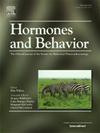High human presence is correlated with lower faecal glucocorticoid metabolite levels in an urban bird population
IF 2.5
3区 医学
Q2 BEHAVIORAL SCIENCES
引用次数: 0
Abstract
Urban wildlife must cope with diverse challenges and stressors, including human presence. However, in addition to being a disturbance, humans can provide energy-rich food and protection from predators. We evaluated the impact of human presence on red-winged starlings (Onychognathus morio) in a highly urbanised environment using faecal glucocorticoid metabolite (fGCM) concentrations as a stress-related biomarker. We performed an adrenocorticotropic hormone (ACTH) challenge to validate a non-invasive method for quantifying glucocorticoids in red-winged starlings. Using this method, we quantified fGCMs in excreta collected from free-living starlings during weekdays (high human presence) and weekends (low human presence) to determine the birds' responses to fluctuating human numbers. Following the ACTH challenge, starlings' circulating glucocorticoid (GC) concentrations increased by 127 % within 30 min and the corresponding fGCM concentrations increased within 1 h of injection. Of the four enzyme immunoassays (EIA) tested, an 11-oxoaetiocholanolone EIA, performed best, detecting a 310 % increase in fGCM concentrations post-ACTH challenge and suggested a 1-h lag between injection and peak fGCM excretion in this species. Human foot-traffic was significantly higher on weekdays compared to weekends, yet free-living red-winged starlings showed overall 30.4 % lower fGCM concentrations on weekdays compared to weekends. Red-winged starlings consume a higher proportion of anthropogenic food on weekdays than weekends and we cannot rule out the possibility that diet-related alteration in gut passage time affect fGCM concentrations. However, the correlation between fGCMs and human foot traffic may also suggest urban red-winged starlings benefit from human presence. Our results raise the possibility that, under certain conditions, the benefits associated with human presence outweigh potential negative effects associated with human activity, at least during the non-breeding season.
在城市鸟类种群中,高人类存在与较低的粪便糖皮质激素代谢物水平相关
城市野生动物必须应对各种挑战和压力,包括人类的存在。然而,人类除了会造成干扰外,还能提供能量丰富的食物和保护,使其免受捕食者的伤害。我们使用粪便糖皮质激素代谢物(fGCM)浓度作为压力相关生物标志物,评估了人类存在对高度城市化环境中的红翅椋鸟(Onychognathus morio)的影响。我们进行了一次促肾上腺皮质激素(ACTH)挑战,以验证一种量化红翅椋鸟体内糖皮质激素的非侵入性方法。利用这种方法,我们对平日(人迹罕至)和周末(人迹稀少)从自由生活的椋鸟排泄物中收集的 fGCMs 进行了量化,以确定鸟类对人类数量波动的反应。注射促肾上腺皮质激素后,椋鸟的循环糖皮质激素(GC)浓度在 30 分钟内增加了 127%,相应的 fGCM 浓度在注射后 1 小时内增加。在测试的四种酶免疫分析法(EIA)中,11-氧代乙酰胆碱酮酶免疫分析法(11-oxoaetiocholanolone EIA)表现最佳,可检测到椋鸟在接受促肾上腺皮质激素(ACTH)挑战后 fGCM 浓度增加了 310%,并表明该物种在注射和 fGCM 排泄峰值之间存在 1 小时的滞后期。与周末相比,平日的人流量明显较高,但自由生活的红翅椋鸟在平日的 fGCM 浓度总体比周末低 30.4%。与周末相比,红翅椋鸟在工作日摄入人为食物的比例更高,因此我们不能排除与饮食有关的肠道通过时间的改变会影响 fGCM 浓度的可能性。不过,fGCM 与人流量之间的相关性也可能表明,城市红翅椋鸟从人类的存在中获益。我们的研究结果提出了一种可能性,即在某些条件下,至少在非繁殖季节,人类存在带来的益处超过了人类活动可能带来的负面影响。
本文章由计算机程序翻译,如有差异,请以英文原文为准。
求助全文
约1分钟内获得全文
求助全文
来源期刊

Hormones and Behavior
医学-行为科学
CiteScore
6.70
自引率
8.60%
发文量
139
审稿时长
91 days
期刊介绍:
Hormones and Behavior publishes original research articles, reviews and special issues concerning hormone-brain-behavior relationships, broadly defined. The journal''s scope ranges from laboratory and field studies concerning neuroendocrine as well as endocrine mechanisms controlling the development or adult expression of behavior to studies concerning the environmental control and evolutionary significance of hormone-behavior relationships. The journal welcomes studies conducted on species ranging from invertebrates to mammals, including humans.
 求助内容:
求助内容: 应助结果提醒方式:
应助结果提醒方式:


